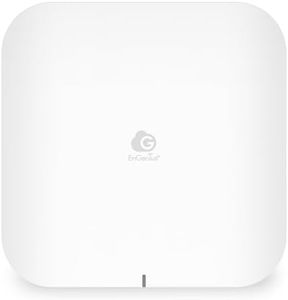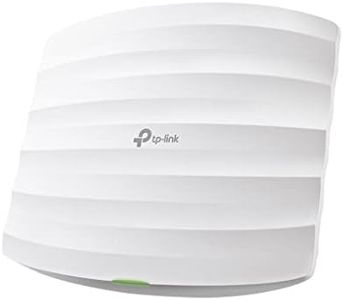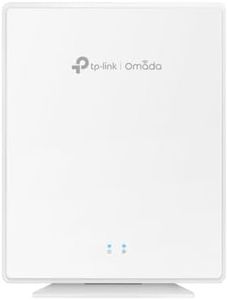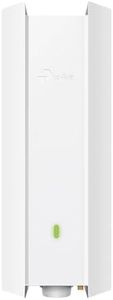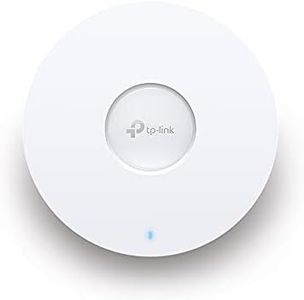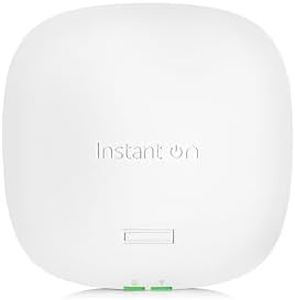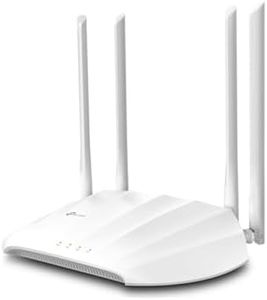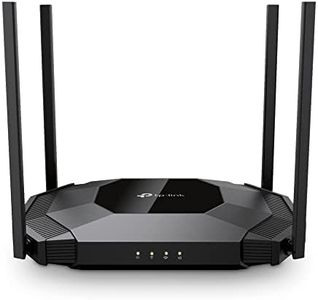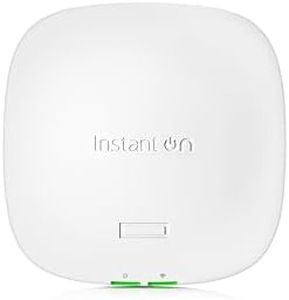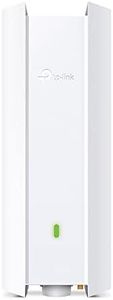We Use CookiesWe use cookies to enhance the security, performance,
functionality and for analytical and promotional activities. By continuing to browse this site you
are agreeing to our privacy policy
10 Best Wireless Access Points
From leading brands and best sellers available on the web.By clicking on a link to a third party's website, log data is shared with that third party.
Buying Guide for the Best Wireless Access Points
Choosing the right wireless access point (WAP) is essential to ensure stable and fast Wi-Fi coverage for your home or business. A wireless access point connects to your wired network and broadcasts a wireless signal, letting your devices connect to the internet or local network wirelessly. When selecting a WAP, it's important to consider your environment, the number of devices that will connect, and the type of activities (like streaming or video conferencing) that will happen over the network. Paying attention to key technical features can help you find the best fit for your needs.Wi-Fi StandardThe Wi-Fi standard specifies the technology the access point uses, such as Wi-Fi 4 (802.11n), Wi-Fi 5 (802.11ac), or Wi-Fi 6 (802.11ax). Newer standards generally offer faster speeds, better performance in crowded areas, and improved energy efficiency. Wi-Fi 4 is older and suitable for basic web browsing and light use. Wi-Fi 5 brought faster speeds for streaming and gaming. Wi-Fi 6 is currently the latest common option, providing performance boosts for environments with many connected devices. Choose a Wi-Fi standard that matches the devices you own and the amount of use your network sees—if you have newer devices or many users, opt for the latest standard supported.
Frequency BandsAccess points can broadcast on different frequency bands: 2.4 GHz, 5 GHz, or both (dual-band). The 2.4 GHz band travels farther and through walls better but can be slower and more crowded. The 5 GHz band is faster and less crowded but has a shorter range. Many modern access points offer both bands simultaneously (dual-band) so users can benefit from both range and speed. If you live in a small area or need fast connections for streaming or gaming, focus on 5 GHz. For extended coverage or areas with many walls, 2.4 GHz is helpful. Dual-band is the most flexible for mixed needs.
Maximum Data RateThis tells you the top speed the access point can theoretically deliver, often measured in megabits per second (Mbps) or gigabits per second (Gbps). Higher numbers mean more potential speed for your devices, but real-world performance will depend on your internet plan and network congestion. For basic browsing and email, lower speeds might be sufficient. For HD video streaming, online gaming, or many users, higher maximum data rates are better. Think about your typical activities and choose a data rate that matches your needs to avoid slowdowns.
Number of Spatial Streams (MIMO)Multiple-Input Multiple-Output (MIMO) technology uses several antennas to send and receive more data at once. The number of spatial streams, like 2x2 or 4x4, indicates how many separate data paths the access point uses. More spatial streams usually improve speed and allow more devices to stay connected without interference. For environments with many users (like offices or schools), more streams are beneficial. For home use or few devices, fewer streams may still provide plenty of speed and reliability.
Coverage AreaThe coverage area tells you how much physical space the wireless signal can reach, often based on square footage or room count. A smaller coverage area is fine for apartments or individual rooms, while larger homes or office spaces may require an access point with a longer range or the use of multiple access points. Think about where you'll install your access point—walls, floors, and electronic devices can affect coverage, so choose a unit designed for your specific layout. If in doubt, pick one with a bit more coverage than needed.
Device CapacityThis refers to how many devices the access point can handle at the same time without performance dropping. Some are designed for just a handful of connections, while others can support hundreds. In homes with just a few devices (phones, laptops, TVs), basic models will suffice. In businesses, classrooms, or public places where many users connect at once, choose access points rated for higher device capacity to avoid congestion and slowdowns.
PoE SupportPower over Ethernet (PoE) allows the access point to receive power through the same Ethernet cable that carries network data, eliminating the need for a separate power plug near the access point. This is helpful for mounting devices on ceilings or high walls. If you want flexible installation options or don't have power outlets where you'll mount your access point, consider one with PoE support.
Security FeaturesSecurity features protect your network from unauthorized access. Look for support for WPA2 or WPA3 encryption, guest network creation, and options for controlling who connects. WPA3 is the latest standard and offers stronger security. If you handle sensitive data or want peace of mind, prioritize better security standards. Even for home use, updated security helps keep your network safe.
Management OptionsSome wireless access points have basic setup interfaces, while others offer advanced management through web portals, apps, or even cloud management. If you're not comfortable with technical settings, choose a model with an easier setup process. For business or large home networks, access points with cloud or remote management make it simpler to monitor and administer multiple devices in different locations.
